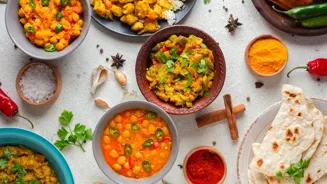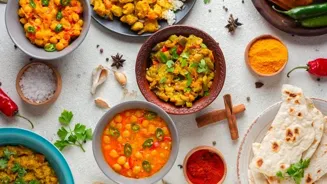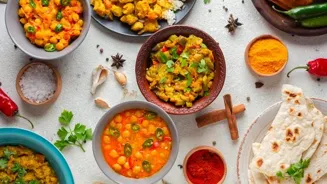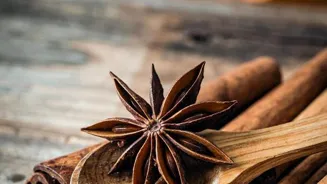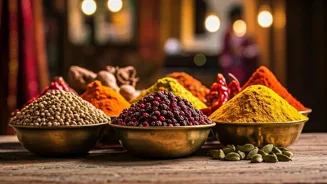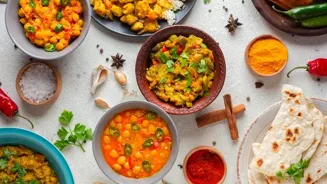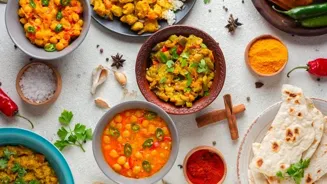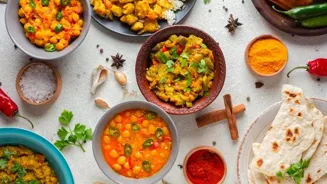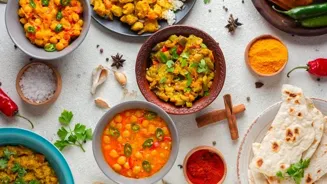Unveil the Magic of Indian Sauces: A Culinary Journey into the Heart of India's Flavors. Discover more!
India, a land of vibrant colours and diverse cultures, is equally renowned for its flavourful cuisine.
At the heart of Indian cooking lies a symphony of sauces, ranging from rich gravies to tangy chutneys.
These sauces aren't mere condiments; they are the soul of many dishes, adding depth, character, and a unique Indian twist to every bite.
Let's embark on a culinary journey to uncover the secrets of these Indian sauces, exploring their ingredients, preparation methods, and the stories they tell about India's rich culinary heritage.
Indian gravies: diverse, flavorful bases for popular dishes
Indian gravies are the foundation of many popular dishes. These luscious sauces are commonly made with tomatoes, onions, ginger, garlic, and a blend of aromatic spices. The specific combination of spices varies depending on the region and the desired flavour profile.
For example, North Indian gravies often feature garam masala, a warm spice blend that adds a rich, complex flavour. South Indian gravies are more inclined towards the use of curry leaves, mustard seeds, and tamarind, giving them a distinctive tangy taste.
The process of making a gravy often involves slow cooking, allowing the flavours to meld together and create a smooth, velvety texture. Gravies are used as a base for vegetable curries, lentil stews (dal), and other dishes, lending them structure, richness and a vibrant flavor.
Indian chutneys: zesty, flavorful sauces for diverse dishes
Chutneys, on the other hand, are the zesty companions to Indian meals. These sauces are typically made with fresh ingredients like mint, coriander, coconut, or tamarind, combined with spices and herbs.
Chutneys can be sweet, sour, spicy, or a combination of all three, providing a burst of flavour that complements the main course. Mango chutney, for example, is a sweet and tangy accompaniment, made with ripe mangoes, sugar, vinegar, and spices.
Mint-coriander chutney is a refreshing and slightly spicy sauce, perfect for dipping samosas or spreading on sandwiches. Coconut chutney, a South Indian staple, is made with grated coconut, green chilies, ginger, and mustard seeds, offering a creamy and flavourful experience.
Mastering spice blending is key to authentic Indian sauces; use fresh, quality spices for unique flavors
One of the secrets to achieving authentic flavors in Indian sauces lies in the art of spice blending. Indian cooks have mastered the use of spices, understanding how different spices interact with each other and how they can be used to create unique flavor profiles.
Spices like cumin, coriander, turmeric, and chili powder are commonly used in Indian sauces, each contributing its own distinct flavour and aroma. The key is to use fresh, high-quality spices and to roast them lightly before grinding them, which enhances their flavour and aroma.
Furthermore, the order in which spices are added to the sauce also matters. Some spices are best added at the beginning of the cooking process to infuse the oil with their flavour, while others are added towards the end to preserve their freshness.
Tempering adds flavor and visual appeal to Indian sauces
Tempering, also known as 'tadka' or 'chaunk', is another essential technique in Indian sauce making. It involves heating oil or ghee in a small pan and adding spices like mustard seeds, cumin seeds, dried red chilies, and curry leaves.
Once the spices start to splutter and release their aroma, the hot oil is poured over the sauce, infusing it with a burst of flavour. Tempering not only adds flavour but also enhances the visual appeal of the sauce, as the sizzling spices create a beautiful garnish.
Different regions of India have their own variations of tempering, using different combinations of spices and techniques. This technique is a simple yet effective way to elevate the flavour of any Indian sauce.
Indian sauce preparation: laborious process yielding flavorful, customizable results
The preparation of Indian sauces is often a labour of love, requiring patience and attention to detail. Many Indian cooks take pride in making their sauces from scratch, using fresh, locally sourced ingredients.
The process of making a sauce often involves multiple steps, such as roasting spices, grinding ingredients, and slow cooking the sauce to allow the flavours to meld together.
While ready-made sauces are available in stores, making your own sauce allows you to control the ingredients and customize the flavour to your liking. Moreover, the aroma of spices filling the kitchen as creating the sauce is a rewarding experience in itself.
Indian sauces showcase diverse regional flavors, essential to Indian cuisine
Indian sauces tell a story about the country's rich culinary heritage. Each sauce is a unique expression of regional flavors, reflecting the local ingredients, cooking techniques, and cultural traditions.
From the rich gravies of North India to the tangy chutneys of South India, Indian sauces offer a diverse range of flavors and textures. They are an integral part of Indian cuisine, adding depth, complexity, and a touch of magic to every meal.
By understanding the secrets of Indian sauce making, one can embark on a culinary adventure and experience the true essence of Indian cooking. Experiment with different ingredients, spices, and techniques to create your very own signature sauces.
